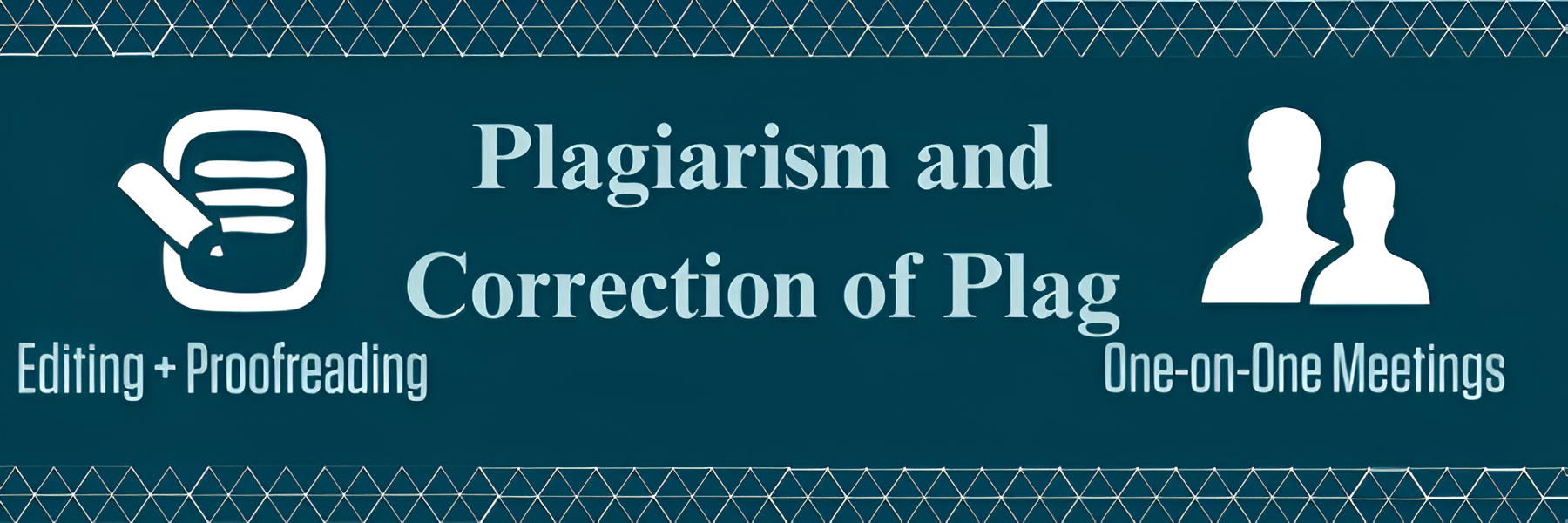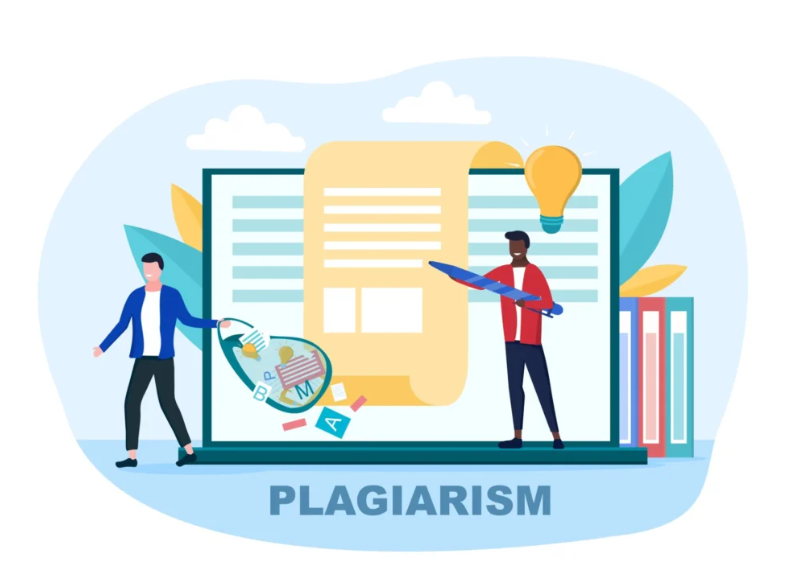
Exploring the Plagiarism Correction

Plagiarism and correction services are essential for maintaining academic integrity and originality. We provide through plagiarism checks using advanced tools to detect similarities and potential issues. Our correction process includes rewriting or rephrasing sections to ensure unique content while preserving the original meaning. This comprehensive approach guarantees that your work adheres to academic standards and avoids any unintentional plagiarism.
Expert Plagiarism Correction
Our expert plagiarism correction service ensures your work is throughly reviewed and refined. We employ advanced detection tools to identify any instances of similarity or overlap. Our team then meticulously reworks the content to eliminate any issues, ensuring complete originality. We provide detailed reports and revisions, guaranteeing that your document meets the highest standards of academic integrity and quality.
1. Advanced Detection Tools: Advanced detection tools use cutting-edge technology to identify plagiarism in your document. These tools scan for similarities with existing content across various sources, ensuring a through analysis. This process helps in pinpointing potential issues, allowing for precise corrections to maintain originality and integrity.
2. Precise Rewriting: Precise rewriting involves carefully revising content to remove plagiarism while retaining the original meaning. Our experts rephrase and reorganize text to ensure clarity, originality, and adherence to academic standards. This meticulous process enhances the quality and integrity of your work, ensuring complete authenticity.
Expert Correction Strategies for Plagiarism
1. Detailed Analysis
Conduct a comprehensive examination using advanced plagiarism detection tools to identify and assess all instances of potential plagiarism. This through analysis highlights sections of overlap and similarity, ensuring a precise understanding of where corrections are needed for maintaining originality.
2. Rewriting
Transform identified plagiarized sections into original content by rephrasing and restructuring sentences. This process involves creating unique expressions and ideas while retaining the original meaning, ensuring that the text is both fresh and compliant with academic standards.
3. Proper Citation
Ensure all sources are accurately referenced according to the required citation style. This includes providing correct author names, publication dates, titles, and page numbers. Proper citation helps avoid plagiarism and gives credit to original authors, maintaining academic integrity.
4. Paraphrasing
Transform original text into new words while retaining the meaning. Effective paraphrasing involves rephrasing sentences, altering sentence structures, and using synonyms. This technique ensures that ideas are conveyed in a fresh way, avoiding direct copying and enhancing originality in writing.
5. Quotation Integration
Seamlessly incorporate quotations into your text by introducing, embedding, and analyzing them within your content. Proper integration involves blending quotes with your own writing, providing context, and ensuring they support your arguments without disrupting the flow of your narrative.
6. Source Verification
Ensure the credibility of your sources by checking their authenticity, relevance, and reliability. Verify the authors' credentials, the publication's reputation, and cross-reference with other reputable sources to confirm the accuracy and integrity of the information used in your work.
7. Content Enhancement
Improve the quality of your content by refining its clarity, coherence, and engagement. Enhance readability through concise writing, engaging language, and logical structure. Incorporate additional insights, relevant examples, and visuals to enrich the overall presentation and impact of your material.
8. Review of Changes
Throughly assess and verify all revisions made to the document. Ensure that changes align with the original objectives and maintain consistency. Check for accuracy, clarity, and proper integration of updates, making sure that all modifications enhance the overall quality and integrity of the content.
9. Formatting Adjustment
Carefully modify and refine document formatting to meet specified guidelines and standards. Ensure consistency in font styles, sizes, margins, and spacing. Address any discrepancies to enhance readability and professional appearance, making sure the document adheres to formatting requirements and maintains a polished look.
10. Consultation
Offer expert guidance and personalized support to address specific needs and concerns. Provide advice on best practices, suggest improvements, and clarify any doubts. Collaborate closely to ensure understanding and achieve optimal results, enhancing overall project quality and compliance with standards.
Advantages of Plagiarism & Correction Service
1. Comprehensive Detection
Utilizes advanced tools to throughly scan and identify all instances of potential plagiarism, ensuring a complete and accurate assessment of your content. This through analysis guarantees that all copied material is detected and addressed.
2. Detailed Analysis
Offers an in-depth examination of the identified plagiarism, breaking down each instance and assessing its impact on your content. This through review ensures precise understanding and targeted corrections for improved originality.
3. Effective Rewriting
Provides high-quality rewriting of plagiarized sections to ensure originality while preserving the intended meaning. This process enhances content clarity and avoids duplication, resulting in a unique and polished final document.
4. Accurate Paraphrasing
Transforms original text into new wording while maintaining the intended meaning and context. This method ensures that the content is unique and avoids plagiarism, improving readability and originality in academic and professional documents.
5. Compliance with Standards
Ensures that all content adheres to academic and ethical guidelines for originality and citation. This approach maintains the integrity of the work, aligning with institutional requirements and preventing potential issues of plagiarism.
6. Expert Insights
Provides valuable knowledge and understanding from seasoned professionals in the field. Their expertise helps identify subtle instances of plagiarism and suggests effective strategies for correcting and enhancing content, ensuring high-quality and original work.
7. Source Verification
Involves through checks to confirm the authenticity and credibility of referenced sources. This process ensures that all citations are accurate and reliable, maintaining the integrity of the content and avoiding unintentional plagiarism.
8. Peace of Mind
Achieved through meticulous plagiarism checks and corrections, ensuring your work is original and properly cited. This process eliminates concerns about academic integrity, allowing you to focus on your research with confidence.
Frequently Asked Questions (FAQs)
Q: 1. What is plagiarism?
A: Plagiarism is the act of using someone else's work, ideas, or expressions without proper acknowledgment, presenting them as your own. It includes copying text, ideas, images, or data.
Q: 2. How can I detect plagiarism in my work?
A: Use plagiarism detection tools and software to check for similarities between your work and existing sources. These tools scan databases and the internet for matching content.
Q: 3. What are common types of plagiarism?
A: Common types include direct copying, self-plagiarism, mosaic plagiarism (blending sources), and accidental plagiarism (unintentional borrowing without citation).
Q: 4. How do I correct plagiarism in my document?
A: Correct plagiarism by rewriting the content in your own words, adding proper citations, and ensuring that all sources are acknowledged according to the required citation style.
Q: 5. What is the difference between paraphrasing and quoting?
A: Paraphrasing involves rephrasing someone else's ideas in your own words, while quoting involves directly copying a passage from a source with proper citation.
Q: 6. How can I ensure proper citation in my work?
A: Follow the citation style guidelines (e.g., APA, MLA, Chicago) provided by your institution or publication. Ensure all sources are properly cited both in-text and in the bibliography.
Q: 7. What are the consequences of plagiarism?
A: Consequences can include academic penalties, legal issues, damage to your reputation, and loss of credibility. It is essential to maintain academic integrity to avoid these repercussions.
Q: 8. How do plagiarism detection tools work?
A: These tools compare your text against a vast database of academic papers, websites, and publications. They highlight matching text and provide a similarity report indicating potential plagiarism.
Q: 9. Can I use AI tools for plagiarism correction?
A: AI tools can assist with detecting and suggesting corrections for plagiarism, but they should be used alongside manual review to ensure accuracy and proper citation.
Q: 10. How often should I check for plagiarism?
A: It is advisable to check for plagiarism at multiple stages of your writing process—during drafting, before submission, and after revisions—to ensure the integrity of your final document.